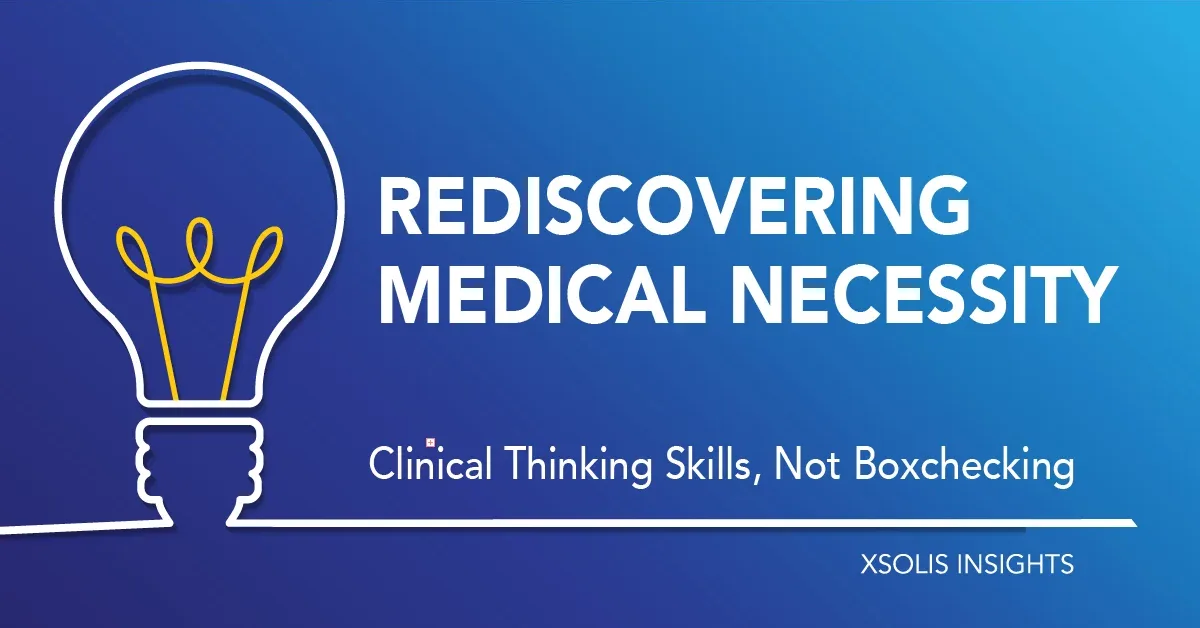Utilization review was first introduced during the 1960s as a solution to combat the rising costs of healthcare by reducing overuse of resources and identifying waste. Health plans began reviewing claims for medical necessity and hospital length of stay, requiring the physician or the utilization review (UR) nurse to show that the chosen plan of care, treatments and procedures were medically necessary and appropriate.
When evaluating medical necessity, UR nurses look at three factors, explained Michelle Wyatt, director of clinical best practices at Xsolis, during a general session at XCHANGE 2019. They look at how sick the patient is, how much care the patient requires, and whether the patient is safe to discharge. Both payers and providers typically use care guidelines and traditional screening tools to determine medical necessity—but those solutions don’t push nurses to use their critical thinking skills, Wyatt said, meaning their clinical expertise is sidelined.
Wyatt explained how the Care Level Score™ (CLS) found in the CORTEX platform, now Dragonfly Utilize, can help nurses more easily tap into critical thinking skills when determining medical necessity.
“Utilization review can be redundant,” Wyatt told XCHANGE attendees. “As nurses, we’ve gotten so used to just checking boxes because we have guidelines and criteria that tell us specifically what to look for. So, we go into the chart specifically looking for key information instead of working to understand what’s really going on with the patient.”
Xsolis’ predictive analytics and machine learning assess a patient’s labs, vitals, medications, overall wellness and more to calculate and update the patient’s CLS in real time. The higher the score, the greater the likelihood that the patient should be in inpatient status. In CORTEX staff can drill down to the full patient-level data and drivers, helping nurses and clinicians make more accurate and defensible reviews for medical necessity decisions, Wyatt explained.
“Using the CLS helps create stronger nurses,” Wyatt told attendees. “You have to trust that your staff has the critical thinking skills necessary to make decisions, know when there’s an abnormal lab or to even know what to look for.”
Wyatt gave attendees advice on how to encourage their nurses to use their critical thinking skills—such as creating fictional scenarios to allow them to brainstorm and problem solve. “When I watch a medical drama on television, I try to diagnose the patient before the nurse or physician on the show does,” Wyatt said. “We need to create these same stories and challenges for our staff.”
Three Key Takeaways
Implementing a software solution such as CORTEX can help nurses gain stronger critical thinking skills and make more accurate decisions concerning medical necessity. So how can you help your team?
- Self-assess your leadership style. To create strong nurses, you have to lead by example. Wyatt recommends taking online evaluations to learn your leadership style and how you can hone it so you can best serve the nurses on your team—and be their champion.
- When switching from traditional screening criteria to a system like CORTEXand the Care Level Score, some nurses and clinicians may struggle or be resistant to change. That’s why there’s no such thing as too much communication, Wyatt said. Explain to your staff how CORTEX and using the CLS can help them make better decisions and deliver better patient care.
- Get creative. Walk your team through unique scenarios or adopt patient rounds that incorporate technology, encouraging staff to problem-solve and put on their critical thinking caps daily.
